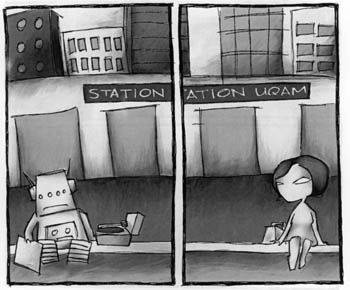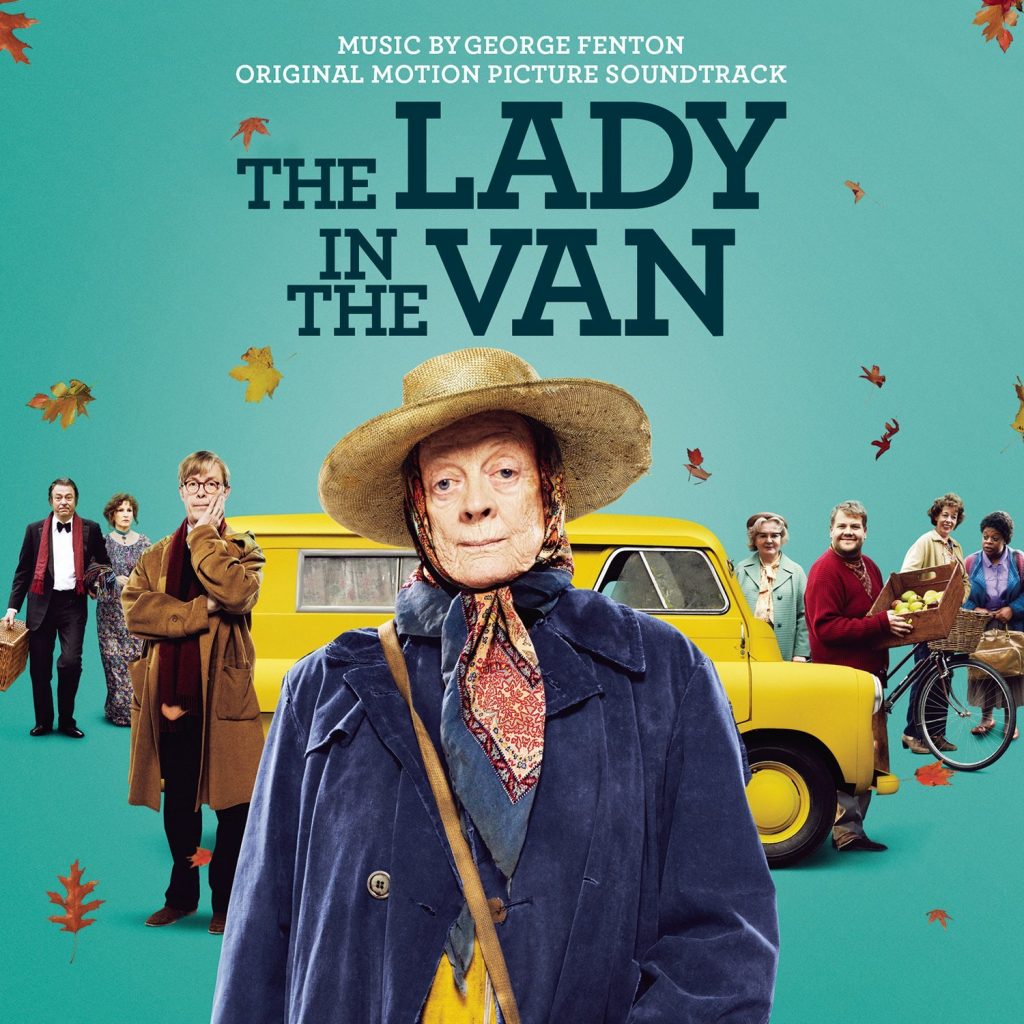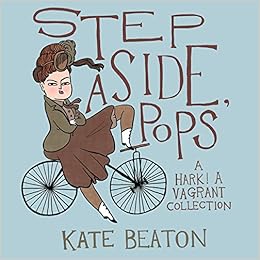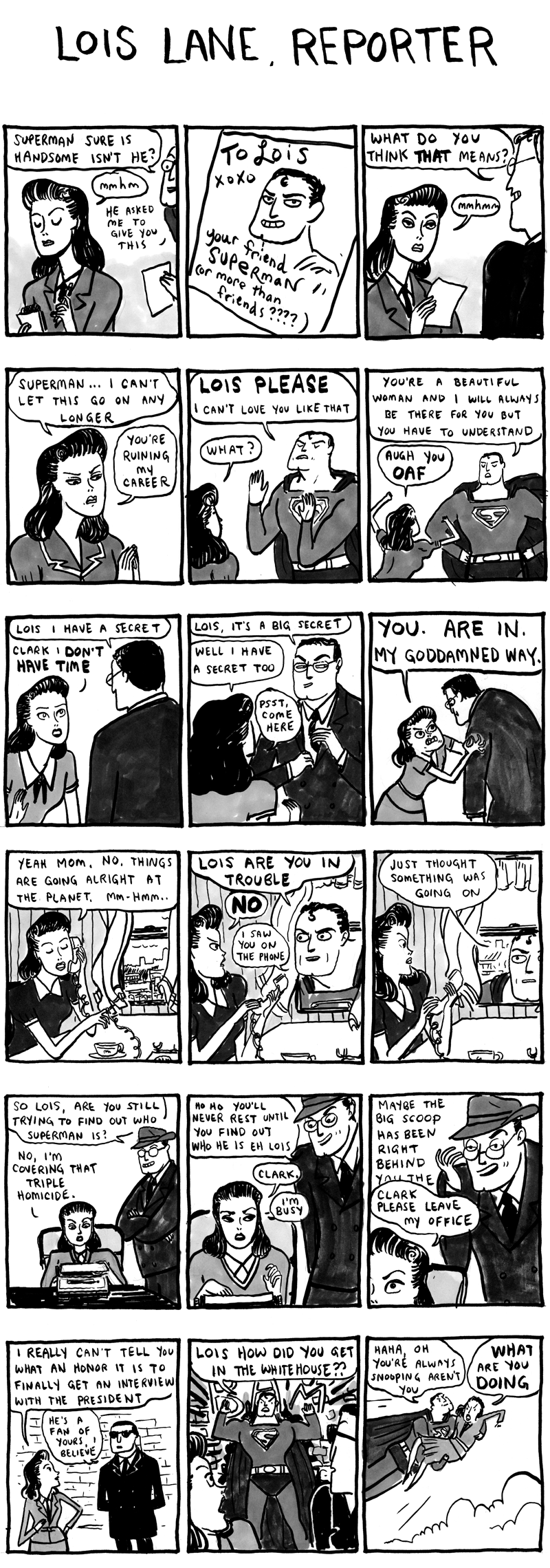Last night, I saw the UMS show “Nufonia Must Fall” by DJ Kid Koala. What initially began as a wordless graphic novel has now turned into a full-on performance, complete with puppets, live music, sound effects, and even a pre-show Bingo game.

The plotline changes significantly between the text and the filmic version (especially the ending), but the basics stay the same: a plain and “old-school” robot repeatedly is bested at his work at the deli by the new and improved, faster model called Hexabot who can make ten times the amount of sandwiches that our protagonist (let’s call him Plainbot) can. Plainbot meets a humanoid woman, Malorie, who is also lonely and works all the time with little satisfaction. After getting fired, Plainbot enters a contest, hoping to write “the best love song of all time.” He’s writing them for Malorie. But SPOILER! He’s super bad at writing songs, to the point of making people throw up upon hearing them, as seen in the novel. But Malorie likes Plainbot for how he is, and they go on dates together (dinner, ice skating, movies, all the old fashioned tricks).
The comic ultimately comes down to being a feel-good love story, as creator Kid Koala and director KK Barrett explain in this video.
In minute 2:23 of this video, KK Barrett remarks on something I’d like to stop and think about. He says that because of the silent novel, silent film, and puppet characters, “You don’t project onto them, but right into them.” This is what Scott McCloud would call “masking” : the use of simplistic, archetypal characters with familiar and minimal details that allows for a stronger emotional connection and easier identification (Wikipedia’s definition).
By using little details, no color and no dialogue, the characters themselves are masks for the “everyman,” save for Malorie’s gender and Plainbot’s android nature. The reader supplies the psychology, the emotion, and the connections between characters and frames. We can even create our own dialogue and background sounds. We are active participants in the creation of the story.

But, then again, I can’t say that I’ve ever been able to empathize with a robot before.
And if you actually slow down and think about the story itself, it’s kind of insane! A girl is basically falling in love with a robot and vice versa. If this happened in real life, serious exams on the woman’s mental stability would take place. The robot’s chip would be taken out to be analyzed, and maybe his body would be sacrificed as “research” at the next DARPA competition.
So why, at the Power Center, were the folks around me “awwing” when Malorie and Plainbot held hands for the first time, when they know a human-robot relationship is obviously weird and a little wrong? Why do we gasp “Oh no!” when Plainbot discovers that Malorie created the Hexabot? Why did I myself feel a flutter in my heart when Plainbot writes on his mixed tape “Lovesong for Malorie <3”? He’s JUST A ROBOT!
The funny thing is that I never questioned the relationship of Malorie and Plainbot while I read the graphic novel, alone in the quiet of my apartment. To me, they were both just characters in a story. Even though Malorie worked in an office cubicle, her lack of a nose and mouth and eye irises blurred the lines between being human and robot. This artistic choice within the novel made it easier to see them as simple, flat, masking characters. It was only until I was sitting amidst the hundreds of other viewers, hearing their responses that I began to be aware of the relationship on the screen in front of me. Suddenly, I saw 3-D puppets who could move their arms up and down, just as I do. Malorie had an expression and was obviously human. There was motion, there was life on that screen.

Photo Credits: AJ Korkidakis
We always are engaging with stories and characters differently depending on the medium it’s shown to us. But in “Nufonia Must Fall,” it was the emotion and “realism” of the piece itself that was altered from paper to film.














